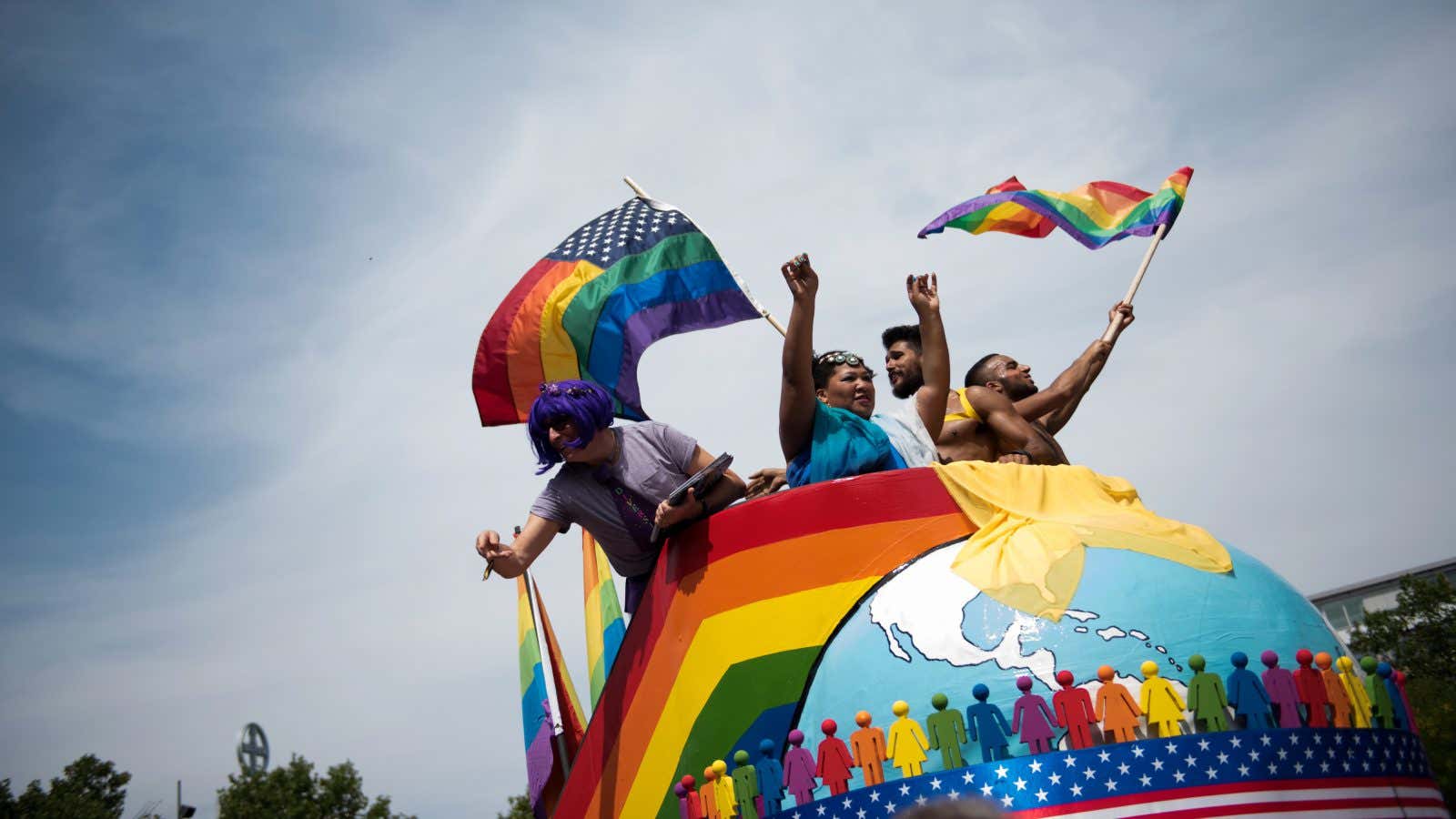It sometimes seems we’re drowning in big data, but there are areas of life which still aren’t easy for survey-takers and census designers to capture. Ticking boxes about age or marital status is easier than filling in those that tie us down to a sexual identity.
In a recent survey of over 11,000 people from 28 countries in the European Union, 5.9% of people said they were gay, lesbian, or bisexual, or transgender (LGBT).
But when asked to define their sexuality another way, choosing from a range of options (only heterosexual; mostly heterosexual; equally heterosexual and homosexual; mostly homosexual; only homosexual; and asexual), 10% of people across the countries identified as something other than heterosexual. That means 4.1% felt they weren’t covered by either the LGBT or heterosexual label. And a hefty 12% of respondents chose “prefer not to say.”
To add even further to the uncertainty, there was wide variation between countries. In Germany, 7.4% of people surveyed said they had an LGBT identity; in Hungary it was only 1.5%. (In only nine of the countries surveyed was the sample size large enough to draw conclusions about the individual country). There was also a wide variation in age, with 16% of people under 30 but only 7.5% of people 30 and older identifying as something other than heterosexual.
People being shy of their intention to vote for a particular political party is one reason pollsters give for inaccurate electoral predictions. Sexual orientation, similarly, appears too private for some people to want to divulge, but for many others, it’s just not easy to sign up to one label.
Overall, the results for the recent EU survey, which was carried out by German survey company Dalia Research, came up with a much higher number for the LGBT population than some national surveys. The UK’s LGB (not T) population was 1.7% in 2015, according to data from the Office for National Statistics released this month. (It only began collecting such data in 2014, and doesn’t include transgender as an option.)
That’s much smaller than the percentage Dalia obtained from the 1,104 people it asked in the UK. It found that 6.5% of British respondents identified as LGB. But here the famous British reserve may be partly to blame. When asked the question that offered a range of options, Britain had the highest proportion of people who preferred not to say.
Asked about these differences, Dalia said sexual orientation is tricky to measure because the way you frame the question changes the results. One reason for the higher number in Dalia’s survey, the company said, was that people answered questions anonymously via mobile apps, so might have felt more comfortable than they would answering in other forms. (The survey also controlled for age, so the results wouldn’t be skewed by younger people with smartphones.)
“The size of the LGBT community is notoriously difficult to measure,” noted Dalia in its press release. It went on to prove that to be true.
Correction: An earlier version of this story said that only nine countries were surveyed. In fact, only nine country surveys were individually statistically significant.
